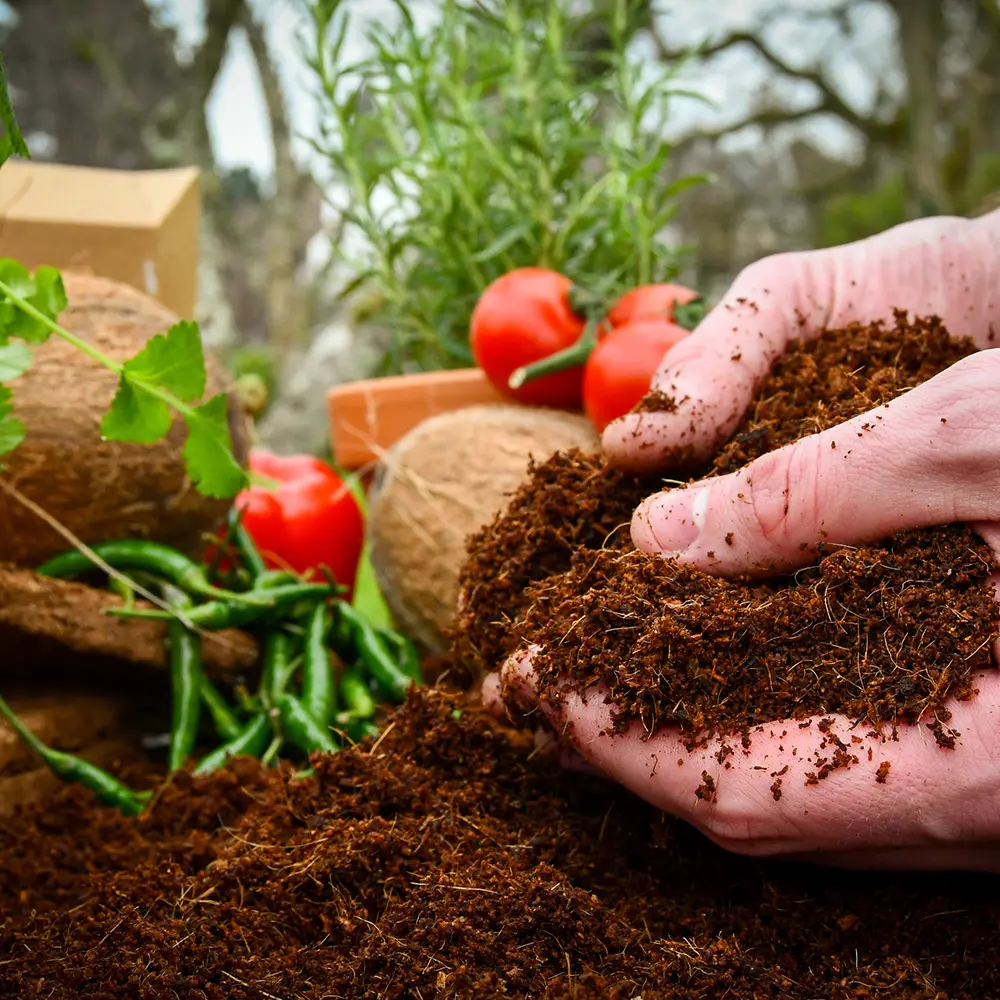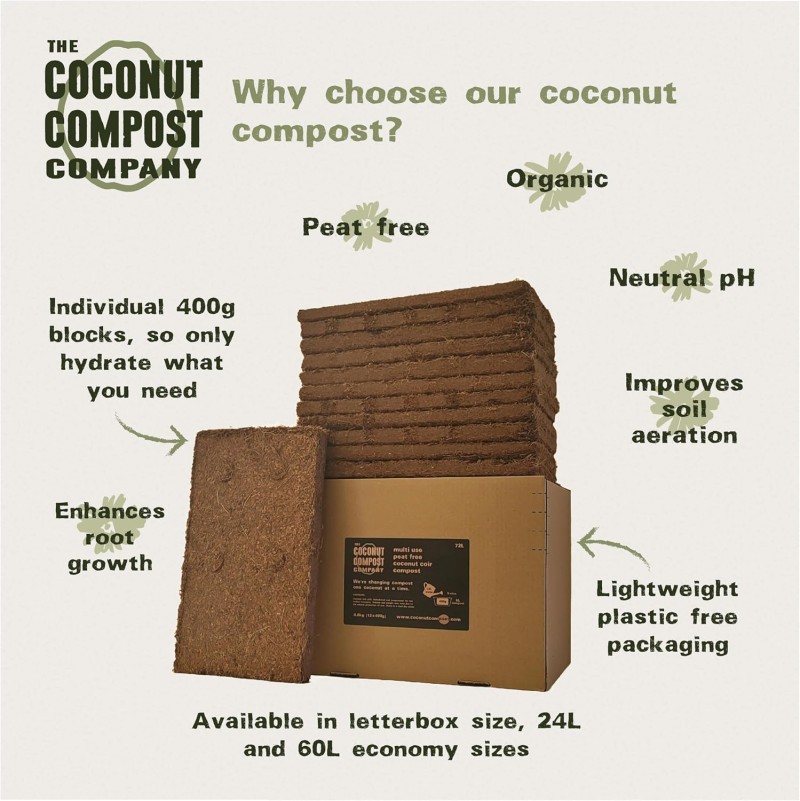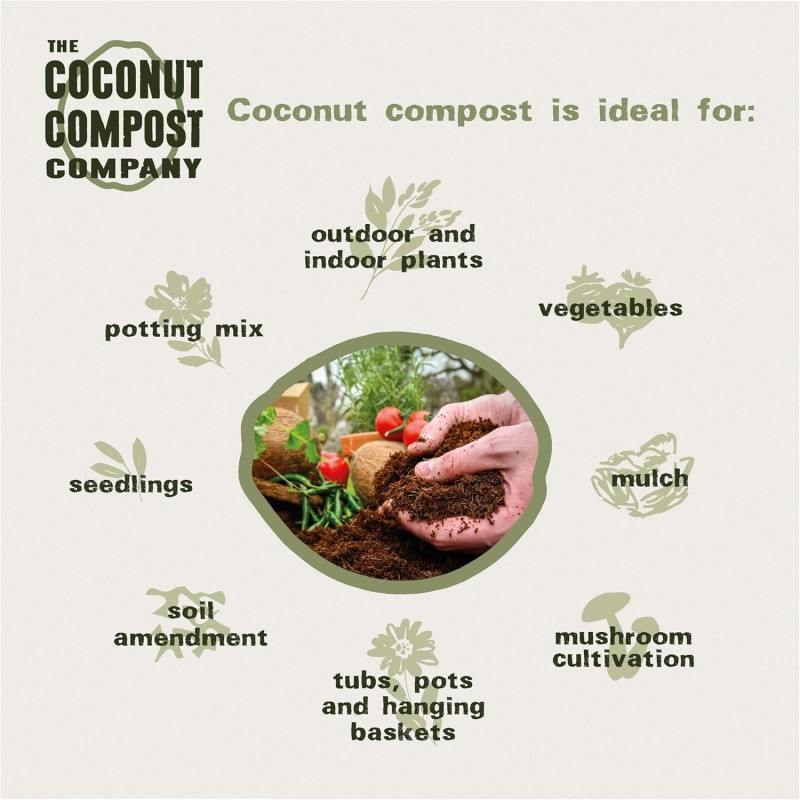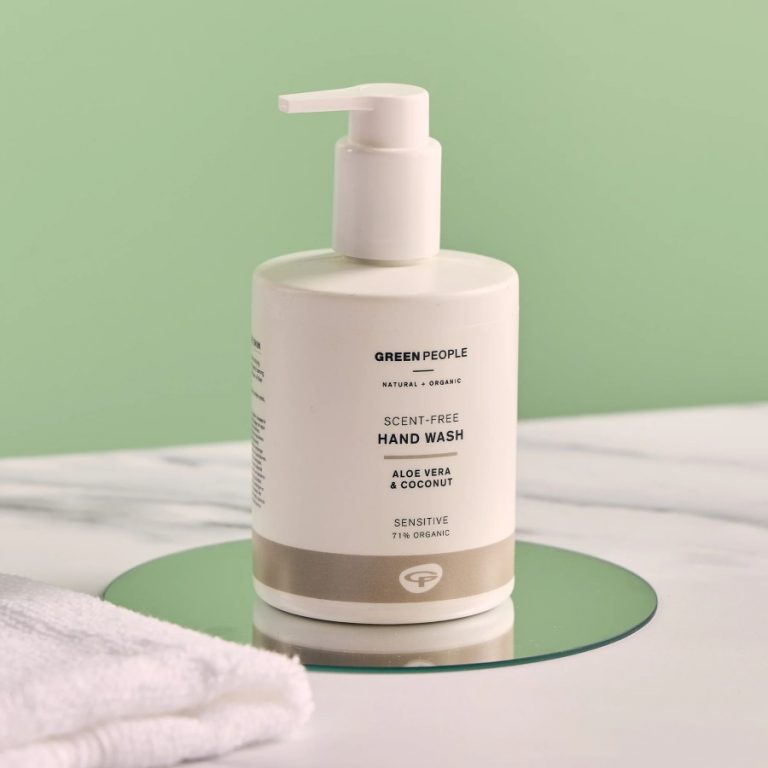
Peat extraction strips ancient bogs, releases stored carbon, and destroys habitats that took centuries to form. Gardeners know this, yet many still reach for peat because it is familiar. There is a cleaner, smarter choice you can use today. The Coconut Compost Company supplies a peat-free soil based on coconut coir, a by-product of the coconut industry, that delivers reliable results without the environmental cost.
Commercial growers have been moving to coir for years, and home gardeners are catching up fast. It is easy to handle, quick to prepare, and kind to roots. This peat-free compost suits herbs, vegetables, houseplants, and seed sowing. It arrives compact, hydrates in minutes, and supports strong growth with sensible watering and feeding.
Use no-dig gardening to protect wildlife, and never use netting to be wildlife-friendly. Also read our post on pet-friendly gardens (some mulches and fresh compost are unsafe near animal friends). For indoor plants, never face plants to outdoor gardens, to help prevent birds flying into windows.
If making your own compost, just bin allium scraps (onion, garlic, leeks, shallots, chives) and rhubarb/citrus scraps, as acids could harm compost creatures. Also don’t compost more than a small amount of coffee/tea grounds due to caffeine (could harm worms in excess – add in shredded cardboard to reduce acids).
Why Choose Coconut Compost?

Peat is not renewable in any useful timeline. Bogs store carbon and support rare wildlife, yet mining peat releases that carbon and destroys the habitat. Once gone, it does not recover quickly. That is a high price to pay for potting up tomatoes.
Coconut coir is different. It comes from husks left over from coconut production, so it makes use of a resource that would otherwise be waste. The Coconut Compost Company sources coir from Sri Lanka, treats it to remove excess salts, then compresses it for transport. Shipping compact blocks by sea lowers the carbon per litre of growing medium. For gardeners who care about sustainable gardening compost, this is a clear step forward.
The practical gains are strong as well. Coir has a fibrous structure that lets roots explore. Growers report better root development than with denser peat, which can compact and suffocate young roots. With sensible water management, coir holds moisture while still allowing air to reach the root zone. That balance supports steady growth and reduces issues like root death from waterlogged conditions.
Storage and handling also improve. A compressed brick is light, tidy, and simple to move. You can store a box in a cupboard, carry it to a balcony, or hydrate it at a kitchen sink. Commercial growers talk about affordability and productivity, as well as the reduced haulage and handling time that comes with a compact format. For anyone switching at home, the same perks apply, only the scale is smaller.
Use it across your garden. Herbs, leafy greens, tomatoes, chillies, and houseplants all respond well to coir. Seedlings appreciate the fine, airy texture. With balanced feeding, you will see consistent growth and healthier plants. If you are weighing peat-free soil benefits against effort, coir makes the choice easy.
Environmental and Sustainability Wins
Coconut compost cuts the demand for peat, so bogs stay intact and continue to store carbon. The coir itself uses waste from coconut processing, which reduces pressure on land and materials. The company removes salts during production, which improves plant safety and reduces the need for heavy flushing later. Compression shrinks the transport volume, then sea freight gets it to the UK with a lower footprint than air.
There is also a social side. The Coconut Compost Company pledges 10 percent of its annual profits to charities in Sri Lanka. The team has close links to the country, so buying this compost supports local causes linked to the source. Ethical sourcing sits alongside practical design, and both add up to a cleaner choice for gardeners.
Better Results for Your Plants
Coir is springy and fibrous, so young roots find paths through it. Compared with peat, which can pack down, coir keeps its structure longer. Growers report even nutrient distribution through the whole root zone, which is key for consistent feeding. That even spread helps strawberries, tomatoes, herbs, and flowers push strong roots and sturdy top growth.
For indoor setups, coir pairs well with grow lights. It keeps moisture without turning soggy, which cuts the risk of damping off in seedlings. For outdoor beds and containers, it blends with soil or stands alone in pots, especially when you add a balanced fertiliser. The result is vigorous growth with fewer root issues and better resilience in hot spells.
How to Use The Coconut Compost

Setup is quick. The parcel is light, clean, and easy to carry. Open the box, place a compressed brick in a bucket, bowl, trug, or wheelbarrow, then add water. The brick swells in minutes and turns into a loose, fluffy medium that is ready to use.
If you are short on space, this is ideal. No heavy bags in the boot, no split sacks, and far less mess. The compact format stores in a cupboard, which suits flat living. It also suits beginners who want a simple peat-free planting guide. Hydrate the brick, work through any clumps with your hands, then pot up seeds, herbs, houseplants, or veg. Add a suitable fertiliser, since coir is low in nutrients by design.
For pots and containers, use it straight or mixed with composted bark or garden soil. For beds, blend it in to improve texture and water management. For seed trays, sieve if you want a finer finish. This easy coconut compost setup removes barriers and gets you growing within the hour.
Step-by-Step Preparation at Home
- Place the coir brick in a sturdy container, such as a bowl, bucket, or wheelbarrow.
- Add the amount of water stated in the instructions. Warm water speeds things up.
- Wait a few minutes while it expands. Have a cup of tea while it does the work.
- Break apart any remaining clumps with your hands or a trowel.
- Check moisture. The texture should be damp and springy, not soggy.
- Add fertiliser, either slow-release granules or a liquid feed, depending on your plan.
- Fill pots, trays, or beds and plant as usual.
Follow the water ratio on the pack. If you add too much, let it drain. If too dry, add a little more. The goal is a light, airy texture that holds together when squeezed, then falls apart when tapped.
Tips for Planting Success
- Vegetables and herbs: Mix coir with a balanced feed and keep moisture steady. Tomatoes and chillies thrive with deep, even watering.
- Houseplants: Use coir for an airy base, then add perlite or bark for extra drainage if needed. Water when the top layer dries.
- Seed sowing: Sieve for a finer top layer. Keep trays moist, not wet, to reduce damping off.
- Indoor growing: Coir works well under grow lights. Herbs set in coir stay tidy and easy to manage in small spaces.
- Feeding: Since coir is low in nutrients, plan a regular feeding schedule. An example is a fortnightly liquid feed for containers.
What Gardeners and Growers Say
Commercial farms have banked on coir for a decade or more. A strawberry grower in Perthshire highlights four wins. The product is affordable, compact, productive, and sustainable. A compact block cuts haulage costs and makes life easier on the farm, while the growing medium holds feed evenly from top to bottom, which drives uniform root growth and strong yields.
Several growers report that peat mixes felt dense and stifled roots. In coir, roots stayed active and spread fast, which reduced dieback and helped plants set fruit earlier. This pattern holds for soft fruit, salads, and greenhouse crops. When water and nutrients stay available through the full depth of the root zone, plants stay stronger for longer.
Home gardeners echo the same themes. A gardener in East Lothian praises the no-fuss setup. No heavy lifting, no spills in the car, and great results for tomatoes and chillies with a simple fertiliser routine. An indoor grower in Edinburgh stores a box in a flat cupboard and uses coir for herbs under a grow light. The herbs kept going month after month, with very little mess to manage.
For seed sowing, users comment on the speed. A warm jug of water, a few minutes of expansion, and the trays are ready. People value how light the brick feels and how clean the process is. From flats to small gardens, the compost fits modern life as well as it fits roots.






